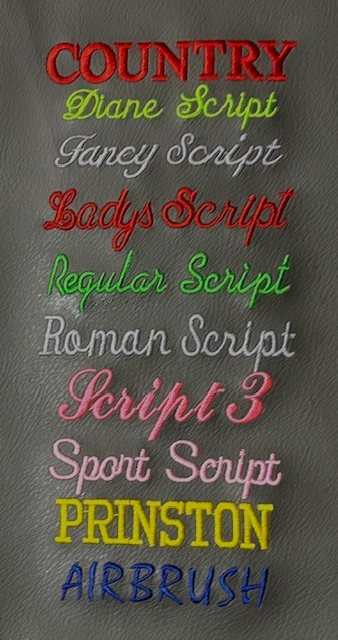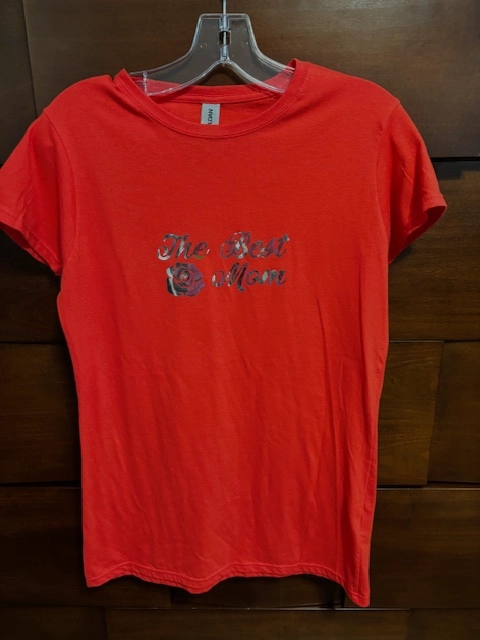The Art of Customized Embroidery: Opening the Keys to Creating One-of-a-kind and Memorable Styles
The keys to producing customized needlework layouts that astound the eye and leave a long-term perception lie in a delicate equilibrium of technique, creativity, and focus to detail. As we delve right into the globe of custom needlework, we uncover the nuanced interaction in between string option, stitch intricacy, and design personalization that boosts a plain garment to a work of art.
Selecting the Right Embroidery Threads
When selecting needlework threads, what crucial aspects should you take into consideration to guarantee the finest results for your customized designs? The selection of needlework string is important in establishing the final outcome of your embroidered style.
Thicker strings can include dimension and appearance to your design, while finer strings are ideal for detailed details and tiny message. Additionally, considering the shade fastness and washability of the thread is critical to make sure that your custom designs keep their quality and vibrancy over time.
Checking Out Various Stitch Methods
To explore the realm of 'Discovering Different Stitch Techniques', one must realize the intricacies and subtleties that each sewing technique gives the art of needlework. Different stitch methods not just include visual rate of interest but also add to the total structure and dimension of the design. One popular stitch method is the satin stitch, which entails very closely stuffed parallel stitches to create a smooth and shiny surface, ideal for filling out shapes and creating strong details.
On the other hand, the backstitch is a versatile method usually used for detailing and including fine information. It entails stitching backwards to develop a solid line of embroidery. Furthermore, the French knot stitch includes a responsive aspect to layouts, ideal for developing distinctive accents like blossom centers or ornamental touches.
Exploring various stitch techniques enables embroiderers to play with light, shadow, and deepness within their styles, raising the aesthetic allure and imaginative quality of their needlework tasks. By mastering different sewing approaches, one can open limitless possibilities for producing unique and memorable personalized embroidery pieces.
Incorporating Personalized Style Components
Having actually discovered the intricacies of various stitch methods such as the satin stitch, backstitch, and French knot, the focus now moves towards including personalized design components good tailor in customized needlework jobs. Personalized layout aspects play a crucial function in making needlework jobs truly one-of-a-kind and memorable.
Another method to integrate individualized design components is by including signs or motifs that hold unique meaning to the recipient or show their passions and individuality. For instance, incorporating a favored blossom, animal, or hobby-related icon can make the embroidery design extra purposeful and individualized. Furthermore, selecting colors that resonate with the recipient or align with the intended theme can further improve the customization of the embroidery task.
Grasping the Art of Color Sychronisation

One secret element of shade coordination is recognizing color theory. This includes recognizing exactly how different colors engage with each various other, the emotions they convey, and just how they can be combined to produce aesthetically appealing styles. By using shade concept principles, embroiderers can produce unified color schemes that boost the total look of the style.
Furthermore, taking notice of comparison is crucial in color control. Making use of contrasting colors can aid certain aspects of the style pop, enhance legibility, and produce an aesthetically vibrant needlework piece. By mastering the art of color sychronisation, embroiderers can raise their designs and create unforgettable items that resonate with clients and viewers alike.
Enhancing Structure With Advanced Embroidery Stitches

French knots, as an example, are best for adding little, elevated dots to your style, imitating the look of beads or producing a textured surface area. Bullion knots, on the various other hand, can be utilized to develop twisted, ropelike components that include an elegant feeling to the embroidery. Seed stitching includes small, scattered stitches that can complete areas with a speckled structure, while turkey job creates fluffy, dimensional accents reminiscent of animal hair or vegetation. Trying out with these advanced needlework stitches allows you to press the limits of standard embroidery and develop absolutely special and visually enticing appearances in your designs.
Conclusion
To conclude, the art of custom-made needlework involves a combination of choosing the right threads, checking out different stitch techniques, incorporating customized style elements, mastering shade coordination, and boosting texture with advanced stitches. By recognizing and executing these vital elements, embroiderers can create one-of-a-kind and unforgettable designs that display their creativity and skill. Needlework lovers can unlock the tricks to creating beautiful and custom items that stand out and leave a long-term impression.